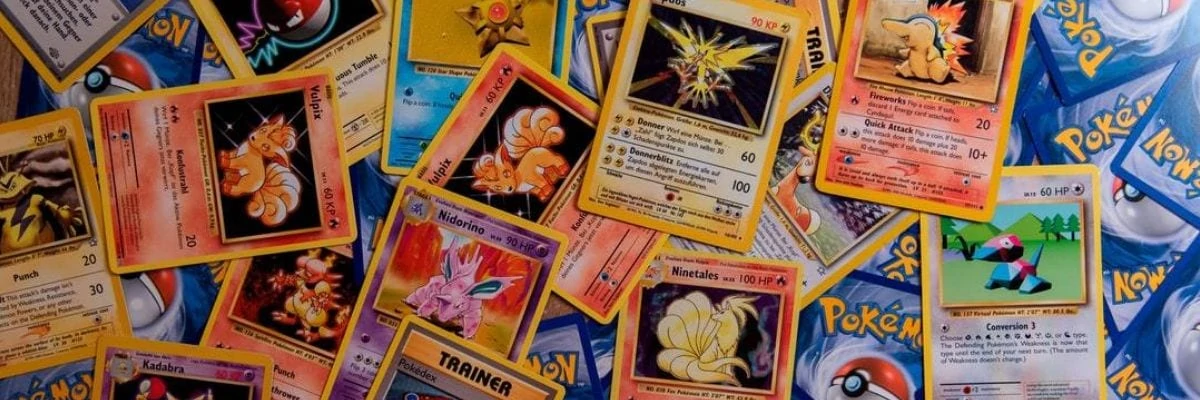Investing In Collectibles as An Alternative Asset Class
While Bitcoin and Gamestop have grabbed all of the investing headlines in 2021, investing in various collectibles such as hockey cards, stamps, art, coins, and even Pokemon cards has also been quite profitable. Even large institutional investors have been getting in on the action. With so much “cheap money” floating around, and banks being so willing to lend to folks that have made money in new places such as cryptocurrency, we’re seeing massive inflation in certain pockets of the collectibles market.
A Micky Mantle rookie card sold for $5.2m, Luca Doncic autograph cards sold for $4.6m, and a Rookie 1986 Fleet Jordan sold for $780k. Pokemon cards soared some 500% in 2020, and a Magic The Gathering (Alpha) Black Lotus sold for more than half a million dollars. Even new, somewhat odd collectibles like NBA’s Top Shot digital cards (part of the Non Fungible Tokens – of NFT- blockchains that are all the rage these days) are making a killing, and have sold out for $230m within days.
There is no denying that investing in collectibles is gaining more and more steam. YouTube personalities like Logan Paul and Gary Vaynerchuk are fueling the flames, and even the biggest troll of them all – Elon Musk – makes sure he tweets some Magic cards pictures in the midst of his Dogecoin pumps.
For years, collectible investors (currency, stamps, gems, stones, sports cards, CCG cards) have been claiming collectibles should be considered an asset class of its own. A counter-inflationary, highly speculative, asset class. Personally, I’ve always thought this case was a bit overdone, but the last year has proven that if rich people want to own something (which is who is driving this collectibles market, let’s not kid ourselves) then it will be worth quite a lot of money at some point.
Similarly to bitcoin, I thought collectibles are an insignificant and highly volatile fluke that has no bearing on the actual financial markets. Something along the lines of – when the economy is good, people spend more (on collectibles too), and when it’s not, these are one of the first assets to be sold.
Well, I guess I was wrong – on both cryptocurrency and collectibles. They are indeed an asset class because many of those who hold them view them as such, and they have hoarded more and more collectibles throughout the pandemic!
This guide will give you the basics of investing in collectibles as a part of your portfolio. The how, what, when and why.
Should I Invest In Collectibles?
Editor’s Note: Not all members of the MDJ editorial team advocate for investing in collectibles, this article is for informational purposes only.
Let’s get one thing straight before we dive in too deeply here: Stocks and Bonds should make up the vast majority of anyone’s investment portfolio. Owning solid companies that guard industries with high barriers to entry, and produce ever-increasing revenues, will continue to be excellent building blocks of wealth. Lending money to stable governments and multinational corporations in the form of bonds, is a tried-and-true way to gradually build your nest egg with minimal risk.
That said, I don’t think putting a certain (low) percentage of your portfolio in collectibles is a bad choice, especially if you have a favourite collectible that you can actually enjoy collecting or investing in. Honestly, collectibles make far more sense to me than Bitcoin does. The world’s governments have every incentive to come down on cryptocurrencies one day – but people with a lot of discretionary income will always be willing to pay for “cool”, “unique” and/or nostalgic items that are simply luxury purchases that make them feel good.
It’s true that unlike company stocks, collectibles don’t have intrinsic value. They don’t generate revenues and are only driven by demand and supply, much like commodities. As such they are a lot more speculative than other asset classes. What happens to Mickey Mantle cards when the older generation dies? Could early sports cards have the same fate as did stamps when the snail mail died? It’s entirely possible.
That’s why if you are investing in collectibles, you should do so in moderation and ignore the false pretenses claiming these assets will appreciate in value for all eternities (the notion that Logan Paul and Gary Vaynerchuk are trying to establish). Much like cryptocurrencies, investing in collectibles is essentially a speculative bet, and not really an investment in the traditional use of the term.
Are Collectibles a Good Investment?
After you have carefully read the disclaimer above I will try to explain why I am personally open to investing in collectibles.
- The pandemic – every hobbyist’s stock has had blowout earnings because people have had to stay and home and go back into their old hobbies (or start new ones). In my view COVID is not simply going away in spite of the vaccines, and these trends will continue in years to come.
- The pandemic #2 – Covid has accelerated wealth differentials across the globe. Many people are suffering from its dire consequences on the economy, but many others are benefiting from it. Wealthier people have more wealth than they did before, and saved up a lot of cash during the pandemic. Wealthier folks are what’s driving these markets, too. Rich people competing over limited items products is the gist of it, and in 2021 there’s more fast money and ego than ever before.
- Positive returns over prolonged periods of time. Collectibles’ returns as an asset class were pretty solid long before 2020 and 2021. Many collectibles have boomed post-2008.
- Collectibles rise together with cryptocurrency. When bitcoin price rises, it floods over to the collectible market really fast. People smarter than me believe that this phenomenon is due to:
- People who are heavily invested in crypto are oftentimes heavily invested in non-traditional assets such as collectibles. You know that “Doomer” type of character that doesn’t believe in banks or stocks? There are plenty of those people in every collectible, and they are normally the hardcore type of collectors – and are also the type of investor who may have got recently gotten quite rich due to bitcoin and ethereum profits.
- Cryptocurrency started off as a way to conduct anonymous business, away from “The Man” and his taxes. Crypto is getting more supervised, but collectibles are impossible to supervise. You could meet up with someone in your local mall and get a copy of your favourite 1st edition Charizard holo (Pokemon card) which is essentially like getting tens or hundreds of thousands in cash piled up into a 3.44 x 2.44 cardboard! Cash is being monitored a lot more carefully over the past 10 years, but collectibles not so much – and it’s not even really enforceable going forward from what I can tell. It’s like precious stones or literal nuggets of gold. I’m not suggesting you should evade taxes, but the fact investing in collectibles can be used as a financial instrument that enables transfer of wealth is worth noting.
Collectibles vs Inflation
Is investing in collectibles a way to hedge against inflation? It’s certainly possible from a theoretical standpoint. In much the same way that there is only so much gold in the ground, or Bitcoins in cyberspace, there are only so many Wayne Gretzky rookie cards.
The problem is that digital gold (i.e. cryptocurrencies) has acted in the exact same fashion as the stock market. This means that when stocks go up, generally Ethereum and Bitcoin have went up as well – and when they crashed, so too did the crypto All Stars. Mathematically, this means that investing in collectibles might actually be a far better portfolio hedge than crypto is.
The bottom line is that it APPEARS like collectibles could be a good investment for an inflationary period, but when dealing with a speculative asset it’s more important than ever to remember that past results are not always indicative of future returns. Collectibles are held by individuals and it does not take all that much to flood the market when the demand is down and trigger 50% swings in one direction or the other.
How to Value Collectibles and Avoid Risky Frauds
Truthfully, while I’m relatively new to the world of investing in Collectibles, I did quite a bit of fascinating reading on the space recently, and a good friend of mine has long invested in everything from Magic the Gathering cards, to unopened Nintendo games.
Consequently, this is not an exhaustive list of the best collectibles that are out there, but rather my personal thoughts. There are so many collectibles that have monetary value that it would be simply impossible to list them all.
What you have to remember when you choose a collectible to invest into is that you have to pick something you like enough to develop a certain level of expertise of. Collectibles are not the transparent markets that we are all used to. For example, when you open your discount brokerage account and look at the Canadian stock market, you can be reasonably sure that the price of those assets more or less reflects their current value. That’s because every day thousands of investors are looking at the same legally-regulated numbers, and deciding what the company is worth.
Collectibles is about auction houses, eBay, Facebook sales, garage sales… haggling about prices, paying shipping, customs if applicable, and then having to pay back 30% to the auction house if you ever want to materialize a high-end asset. It’s as convoluted as it sounds and if you don’t know what you are doing you are going to end up buying fake, inferior, and simply overpriced items. Don’t be a Timmy and do your homework about whatever it is you decide to buy with your hard-earned cash. It’s even important to become familiar with the specific grading and valuing of collectibles within your specific space as seemingly small details can make a massive difference between a “mint” product valuation and a much cheaper “average used” version of the same item.
My friend told me that they have chosen their particular focus areas because they believe the strongest factor when it comes to collectibles is nostalgia, and the second strongest thing is prestige. This is how it’s always been. Older people with money buying the things they always wanted to own. Whether it’s the sports car their favorite actor was driving or their cousin’s flashy toy.
Which Collectibles Should I Invest In for 2021?
Given those parameters and my research, here are the most common recommendations for 2021 investment in collectibles:
Sports Cards: New or old NBA cards or Baseball cards. Hockey is fine too, just a smaller audience. After sports cards in the 80s and 90s have been considered dead for years, Michael Jordan’s documentary and Kobe Bryant’s death made their respective rookie cards extremely expensive, and then COVID hit and there are new records almost daily for newly printed cards!
Note: In the early- to mid-nineties, the sports card industry committed the cardinal sin of an investment commodity – it became too abundant. With so many new companies entering the game and flooding the market with new cards, there was very little scarcity to value. I wouldn’t place bets on cards after this era if it was me.
Vintage Toys: Whether still in the box or not, our childhood’s old toys are now selling for good amounts. Everything from special edition Hot Wheels cars to unique Barbie Dolls and Star Warms memorabilia is fetching tens of thousands of dollars.
Vintage stickers: Garbage Pail Kids: one of the most identifiable 80’s trends is making a comeback with Topps, its manufacturer, issuing new series monthly, while higher-end collectors are focusing on the first series of the cards from 1986.
Video Games and Computer Games: Old Nintendo games are going through the roof. Especially sealed, as do old functioning or sealed consoles, old computer, computer parts, and computer games. In short, it’s the people who grew up in the 80s and 90s who are gaining access to wealth now and want to buy back their childhood. Remember, the young boys and girls that fell most in love with these technologies became the tech startup and crypto millionaires of today.
CCG Cards like Magic: The Gathering & Pokemon: Much like the plays on nostalgia above, These card games were popular since the early 90s (Magic) / late 90s (Pokemon) as a collectible, and now you have famous rappers dropping hundreds of thousands on them.
Magic the Gathering also has a unique clientele, as many of the professional magic players ended up as professional poker players in their adulthood. Magic has been Hasbro’s best brand for years, and still boasts approximately 15 million active players globally (including online).
Many unique Magic, Pokemon, Digimon, and Yu-Gi-Oh cards have been announcing new records almost daily the last few months.
Comic Books: Perhaps the original “kids collectible” to make it big, comic books have not been left out of the most recent surge in collectible valuations. With several comics recently going for over one million dollars, these old school collector items have withstood the test of time and held their value.
Art: While it is hard to actually calculate the return on specific pieces of art due to the high transaction costs involved, I have never heard so much chatter amongst the talking heads on TV in regards to, “how it makes sense to have a portion of one’s wealth in art.” As someone who has never really understood Art per-se, the prices involved just make my head hurt. Suffice it to say that rich people like showing off by possessing a lot of nice stuff – so it could very well be a hedge against inflation.
FAQ About Investing in Collectibles In Canada
Making Sense of the Explosion in Collectibles Investing
At the end of the day, saying that an asset has rewarded speculators over the last decade or so is not proof that its prices will keep rising forever. Much like gold, diamonds, or bitcoin, collectibles don’t actually produce wealth; consequently, they’re impossible to value in a traditional investment sense.
That said, I don’t think it’s any accident that in a time when we see wealth inequality at generational highs, and new wealth being accumulated by overnight tech and crypto success stories, that the stuff they want is rising in value. After all, there is no rational reason why paintings and other art forms should be “worth millions” while much-loved pieces of childhood should remain stuck to retail prices. Rich people have more money than ever, and with many in the investing world predicting inflation
Personally, I’ll be sticking with dividend stocks and all-in-one ETFs, but I might just go looking through my old hockey card collection to see if I don’t have some hidden investment returns lying around.
I've Completed My Million Dollar Journey. Let Me Guide You Through Yours!
Sign up below to get a copy of our free eBook: Can I Retire Yet?




